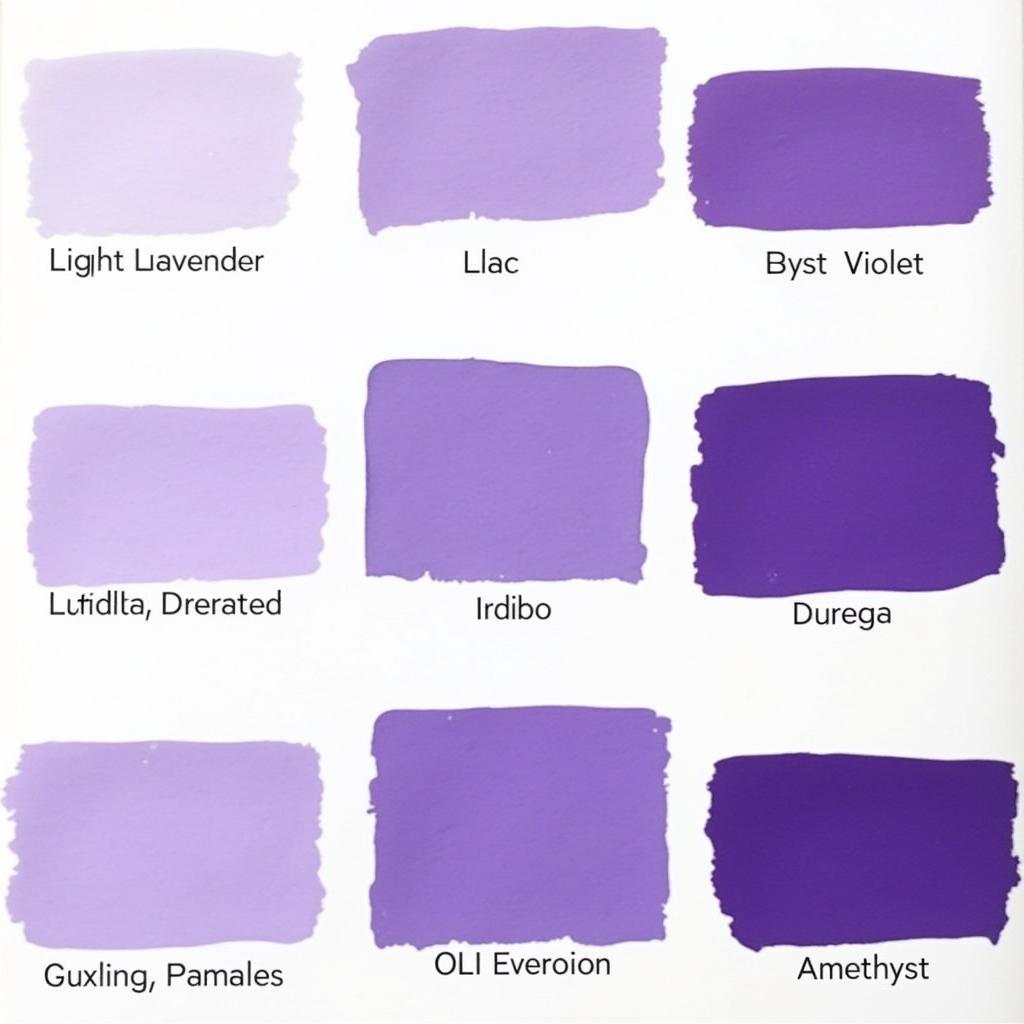Purple, a color often associated with royalty, magic, and creativity, isn’t a primary color like red, yellow, or blue. It’s created by mixing two primary colors: red and blue. But the journey to creating the perfect purple isn’t as simple as just combining any red and any blue. The nuances of each hue play a significant role in the final result. Let’s delve into the fascinating world of color mixing and discover the secrets to achieving a wide range of purples.
Understanding the Basics of Color Mixing
The foundation of creating purple lies in understanding the color wheel. Red and blue sit opposite each other on the traditional artist’s color wheel, indicating their complementary nature. This means that when combined, they create a secondary color – purple. The specific shade of purple depends on the proportions of red and blue used, as well as the undertones of each color. Did you know there are specific food colorings that make purple? Find out more at what food coloring makes purple.
The Ratio of Red and Blue
The more red you add, the warmer and redder the purple will become, leaning towards magenta or fuchsia. Conversely, adding more blue results in a cooler, bluer purple, such as indigo or violet. Equal parts of red and blue will generally produce a true purple.
The Impact of Undertones
Undertones are subtle hints of other colors within a primary color. For instance, a red might have a bluish undertone, making it slightly cooler, while another red might have a yellowish undertone, making it warmer. These undertones significantly impact the resulting purple. A warm red mixed with a cool blue might produce a muted purple, while a cool red mixed with a warm blue could result in a vibrant violet. Ever wondered what color pansies are? You can explore various shades, some of which are indeed purple, on this page: what color is pansy.
Exploring Different Shades of Purple
Purple encompasses a broad spectrum of shades, each with its unique character and applications. Let’s explore some of the most popular ones:
- Lavender: A light, delicate purple with a cool, calming feel.
- Lilac: A slightly warmer and more saturated version of lavender.
- Violet: A vibrant, bluish purple, often associated with flowers.
- Amethyst: A rich, jewel-toned purple with reddish undertones.
- Indigo: A deep, dark purple bordering on blue.
 Different Shades of Purple Paint Swatches
Different Shades of Purple Paint Swatches
Creating Purple in Different Mediums
The process of creating purple can vary slightly depending on the medium you’re working with.
Paint
Mixing acrylic or oil paints allows for a hands-on approach to color blending. Start with a small amount of each color and gradually adjust the ratio until you achieve the desired shade. Remember, it’s always easier to add more color than to take it away!
Digital Design
In digital design programs like Photoshop or Illustrator, you can create purple using color pickers or by adjusting the RGB or CMYK values. Experiment with different combinations to find the perfect digital purple.
Food Coloring
Creating purple food coloring is all about combining red and blue. The exact ratio will depend on the specific brand of food coloring and the desired intensity of the purple. You can learn more about mixing food coloring to create pink here: what food coloring colors make pink.
“Understanding the undertones of your red and blue is crucial for achieving the desired purple,” says renowned color consultant, Amelia Hughes. “Experimentation is key to mastering the art of color mixing.”
Conclusion
Creating purple is a fascinating exploration of color theory and mixing techniques. By understanding the interplay of red and blue, and considering the impact of undertones and ratios, you can create a wide range of captivating purples. So, grab your paints, open your design software, or head to the kitchen and start experimenting! If you are interested in different colors for metal roofs, take a look at this article: what colors do metal roofs come in. Ever pondered why purple is called purple? Discover the origins of the name here: why is the color purple called the color purple.
FAQ
- What are the two main colors that make purple?
- How do I make a lighter shade of purple?
- How do I make a darker shade of purple?
- What is the difference between violet and purple?
- How do I create purple in digital art software?
- Can I mix purple food coloring?
- What are some common uses for purple in design?
Need further assistance? Contact us at Phone Number: 0373298888, Email: [email protected] or visit us at 86 Cau Giay, Hanoi. We have a 24/7 customer service team.

